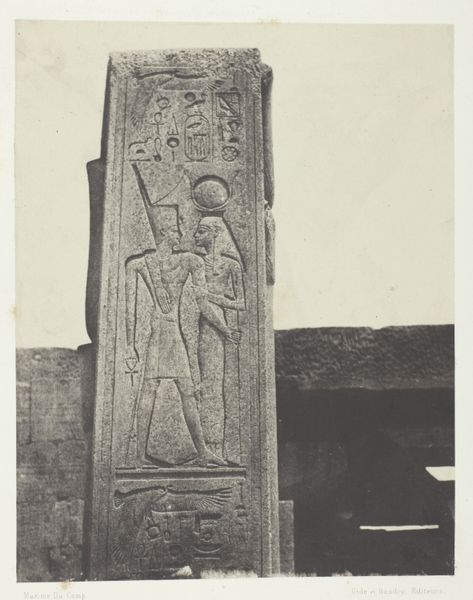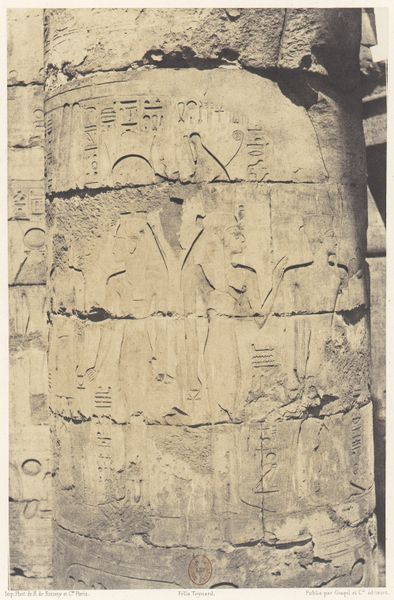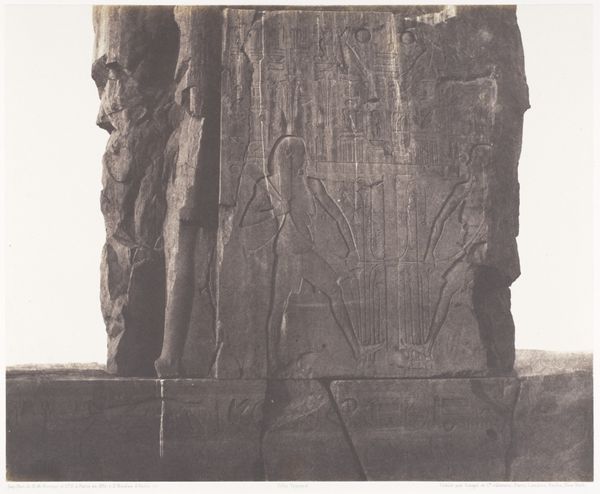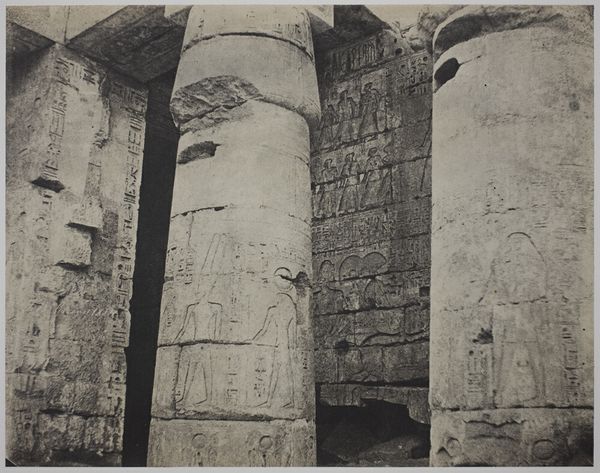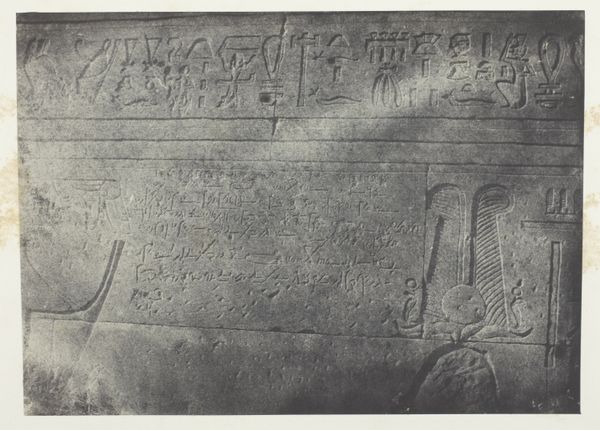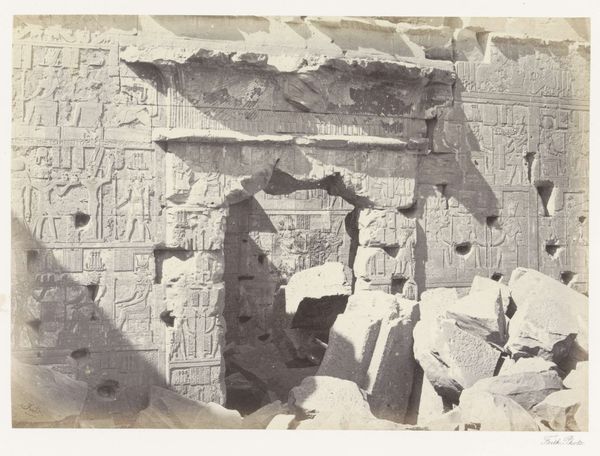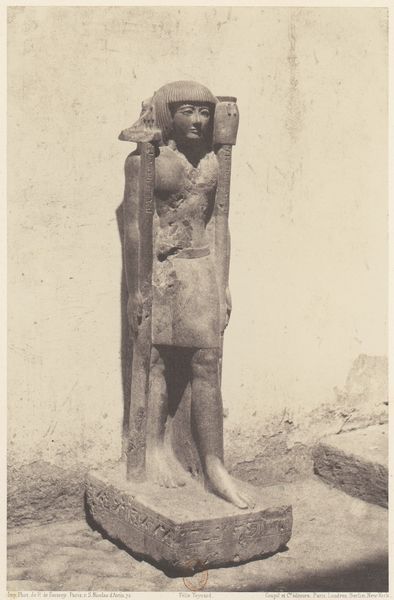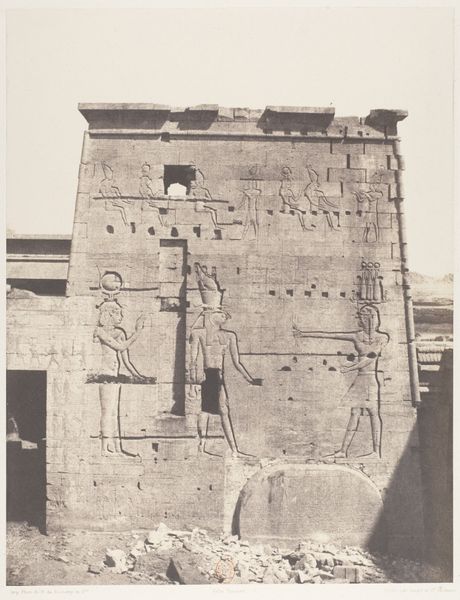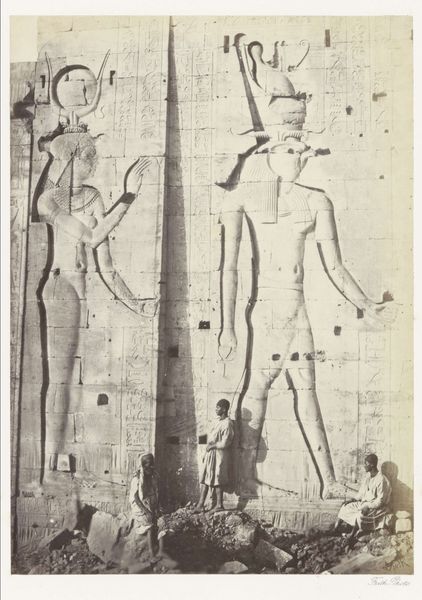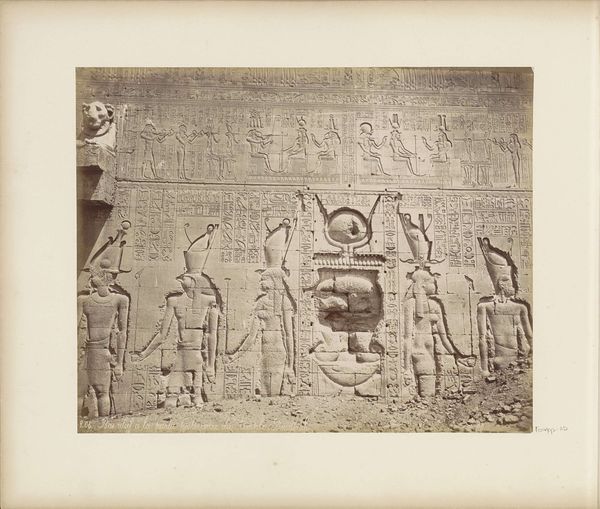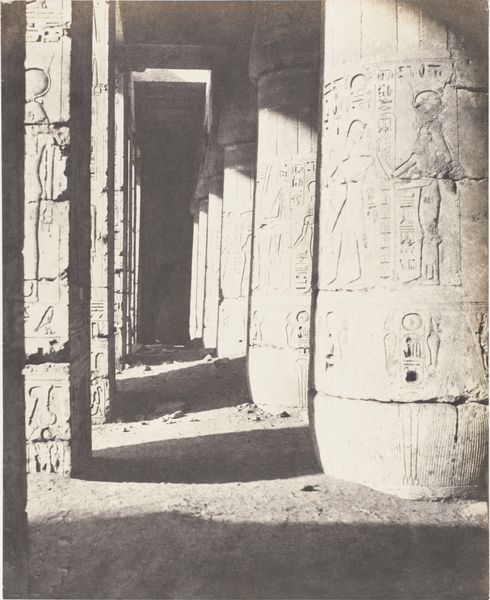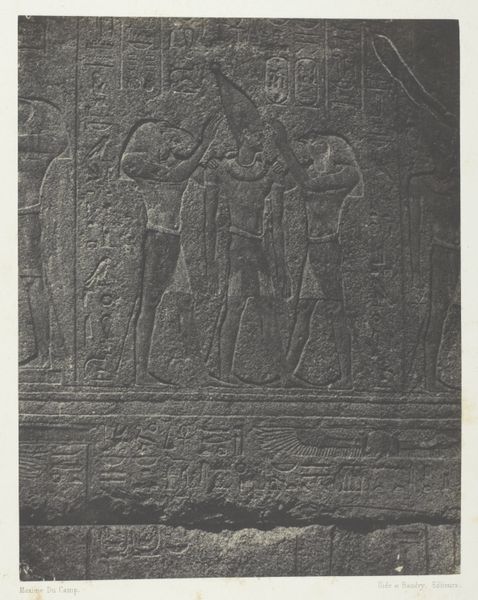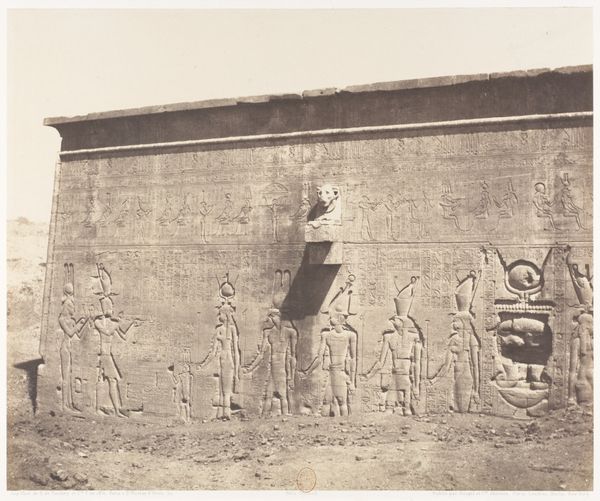
Karnak (Thèbes), Palais - Construction de Granit - Pilier Sculpté, au Point P 1851 - 1852
0:00
0:00
print, photography, architecture
# print
#
landscape
#
ancient-egyptian-art
#
photography
#
historical photography
#
geometric
#
ancient-mediterranean
#
column
#
arch
#
history-painting
#
architecture
Dimensions: 26.8 x 13.5 cm. (10 9/16 x 5 5/16 in.)
Copyright: Public Domain
Curator: What a striking image! This is Félix Teynard's "Karnak (Thèbes), Palais - Construction de Granit - Pilier Sculpté, au Point P," a photograph taken between 1851 and 1852. It documents a detail of a sculpted granite pillar at the Karnak Temple complex. Editor: My first impression is one of immensity, reduced to monochrome. The fluting of the columns, the dense hieroglyphs – all softened and flattened by the photographic process. It's monumental but feels strangely delicate. Curator: Indeed. Teynard’s photograph offers us a tangible link to ancient beliefs. Look at the pillar’s details: the relief carving of a figure – likely a pharaoh or deity– holding a staff, symbols denoting power, legitimacy. Each carefully etched form echoes through the millennia. Editor: The light is definitely at play here, lending depth and texture to the stone. Note the contrast between the sharply defined edges of the hieroglyphs on one face, against the softer, rounded forms of the columns to the right. Curator: The figure's frontal pose speaks volumes too, presenting itself to be acknowledged. In its time, it conveyed royal or divine status to anyone in that space, shaping the perceptions of all who beheld it. How many lives, how many events transpired under its gaze? The photograph arrests this narrative thread, giving it fresh life. Editor: Precisely! There is an arresting composition, especially given its photographic constraints. The slight blurring around the edges – whether intentional or a result of the early photographic process – emphasizes the scale and gives it an otherworldly aura, and creates depth that the image might otherwise have lacked. Curator: Seeing Teynard's photograph, therefore, prompts reflection about continuity. A testament to human imagination, artistry, and their enduring dialogue with mortality and legacy. Editor: An elegant dialogue indeed – between surface and depth, permanence and ephemerality, the monolithic and the nuanced. It provokes further exploration of its artistic form.
Comments
No comments
Be the first to comment and join the conversation on the ultimate creative platform.
